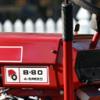Sign in to follow this
Followers
0

Clear Coat?
By
chesbaycruiser, in Restorations, Modifications, & Customizations

By
chesbaycruiser, in Restorations, Modifications, & Customizations